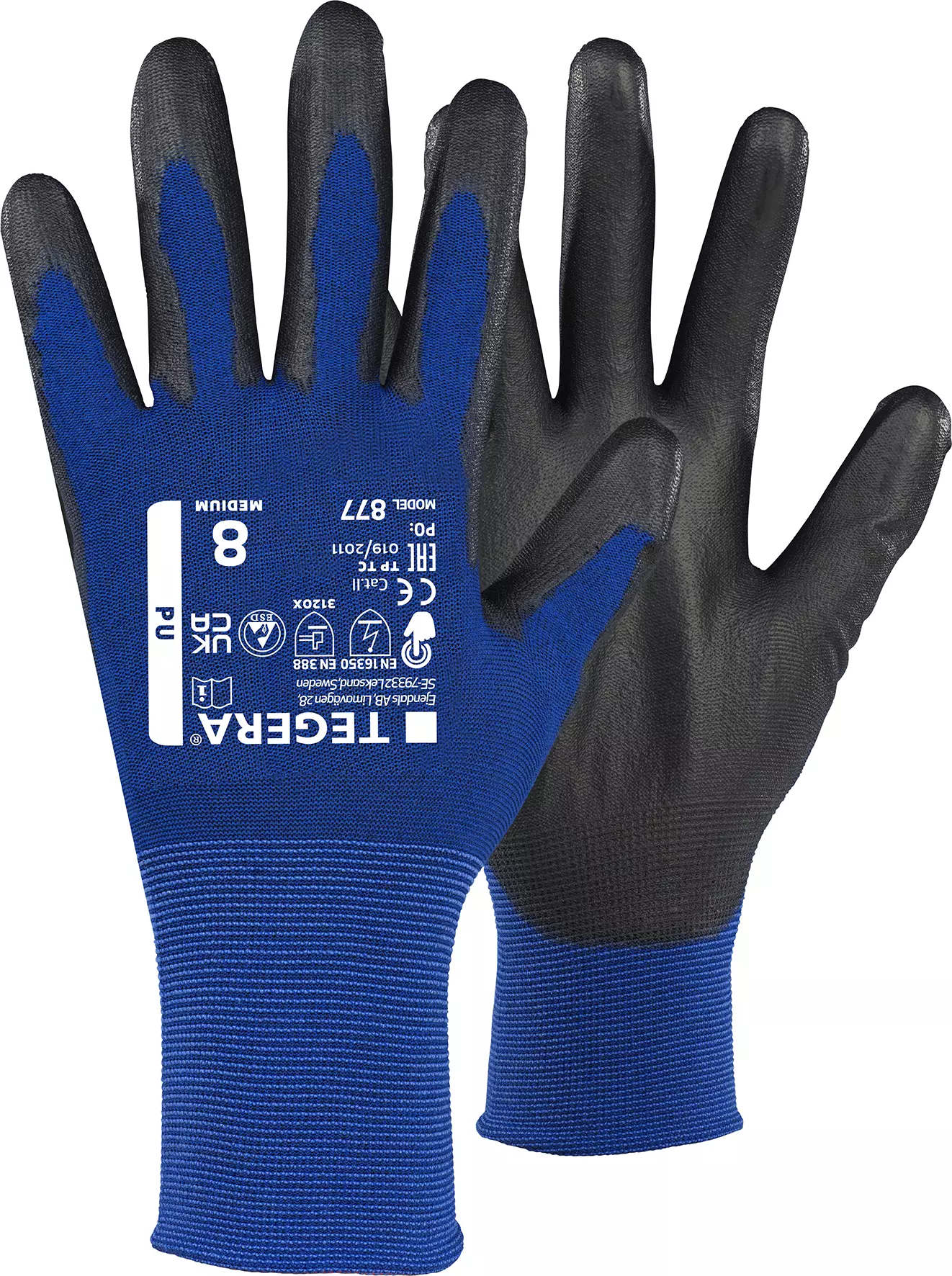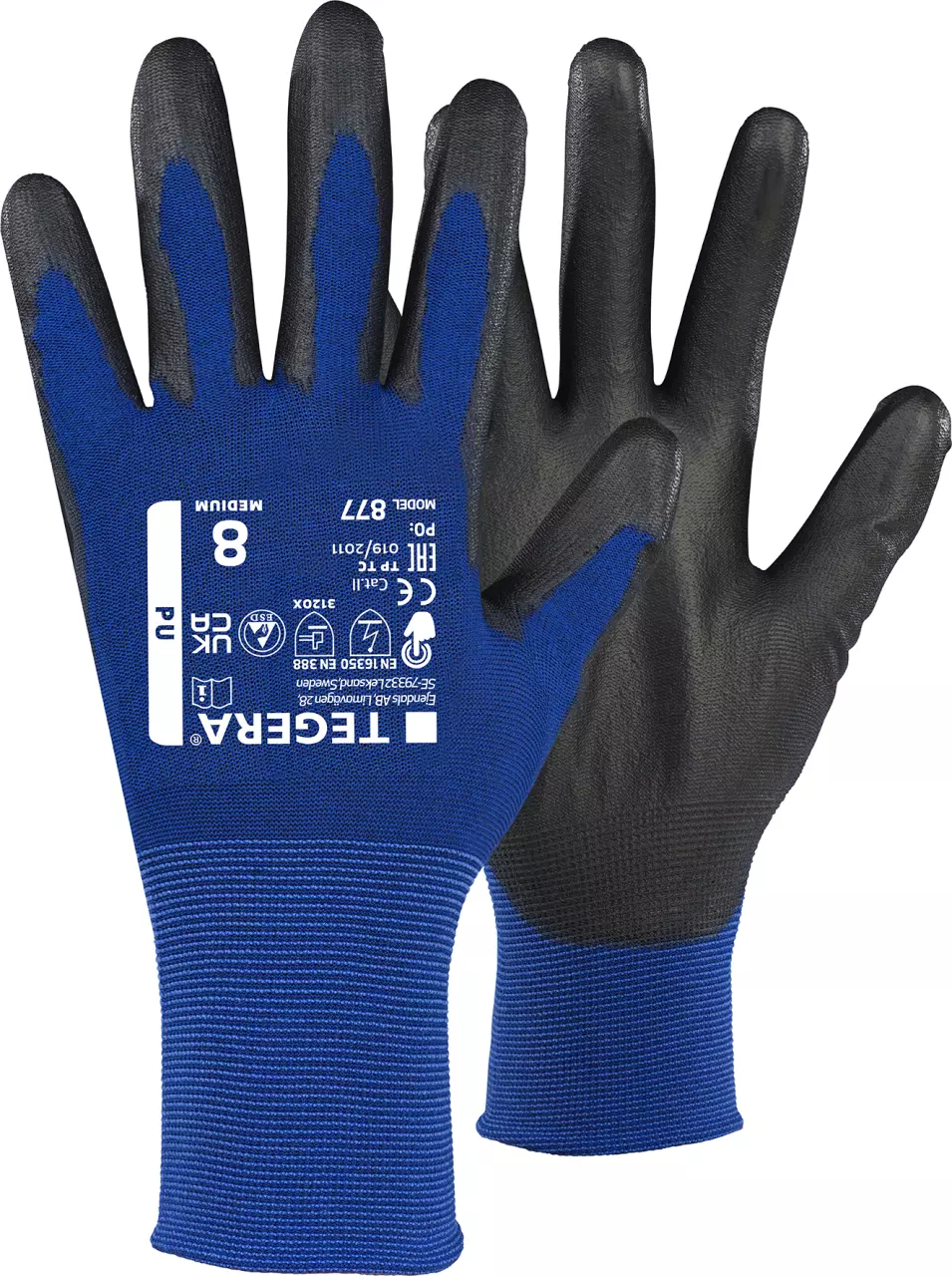
Features You'll Love

Coating Material · Polyurethane (PU)
EN 388 · Abrasion Resistance Level 3, Puncture Resistance Level 0, Tear Resistance Level 2
EN 61340-5-1 · Electrostatic Discharge Antistatic
The material applied to glove surfaces to enhance grip, protection, and durability for specific work conditions and hazards.
Provides good resistance against scraping, scratching, and rubbing on rough or abrasive surfaces.
Offers no protection against puncture hazards.
Offers moderate resistance against snagging or catching on rough objects, preventing small rips from growing.
Guards the product’s sensitive electronics against damage from static electricity. This protection during manufacturing and handling prevents hidden component failure, ensuring your device works reliably and has a longer operational life.

Cuff Style · Elastic
The elastic cuff provides a snug, secure fit, keeping debris out and ensuring your gloves stay comfortably in place.
32,07 €
Price per 6 pairs
5,34 € / pair
Choose size
Shipping fee is 7,94 € for orders under 80,00 €
Features You'll Love

Coating Material · Polyurethane (PU)
EN 388 · Abrasion Resistance Level 3, Puncture Resistance Level 0, Tear Resistance Level 2
EN 61340-5-1 · Electrostatic Discharge Antistatic
The material applied to glove surfaces to enhance grip, protection, and durability for specific work conditions and hazards.
Provides good resistance against scraping, scratching, and rubbing on rough or abrasive surfaces.
Offers no protection against puncture hazards.
Offers moderate resistance against snagging or catching on rough objects, preventing small rips from growing.
Guards the product’s sensitive electronics against damage from static electricity. This protection during manufacturing and handling prevents hidden component failure, ensuring your device works reliably and has a longer operational life.

Cuff Style · Elastic
The elastic cuff provides a snug, secure fit, keeping debris out and ensuring your gloves stay comfortably in place.
Product description
TEGERA 877, A very thin and flexible ESD glove with polyurethane coating in the palm. The glove is suitable for touchscreens and provides a good fingertip feel. For use in ESD protected work areas where excellent tactile sensitivity is required. The glove is suitable for touchscreens, allowing seamless transition from one task to another without removing gloves. The glove's thin 18 gg fibre and good breathability ensure all-day comfort.